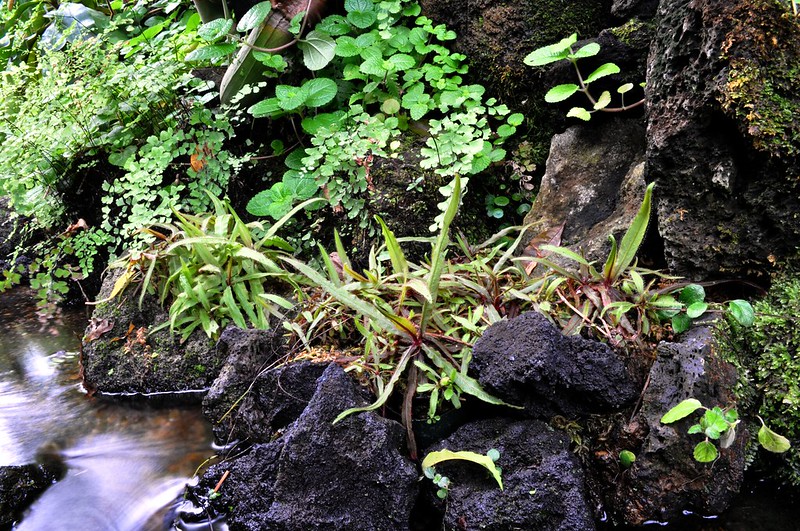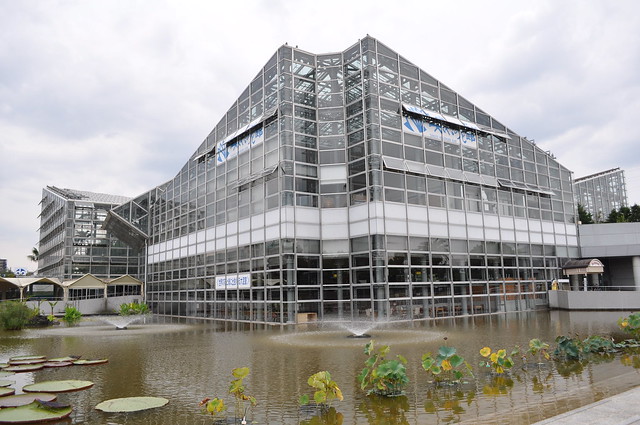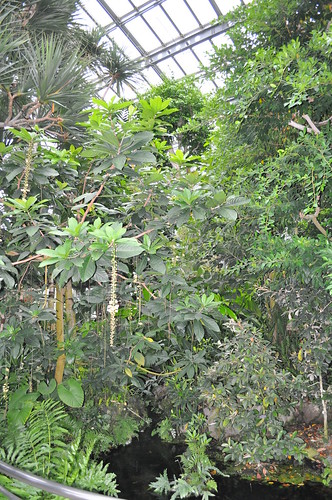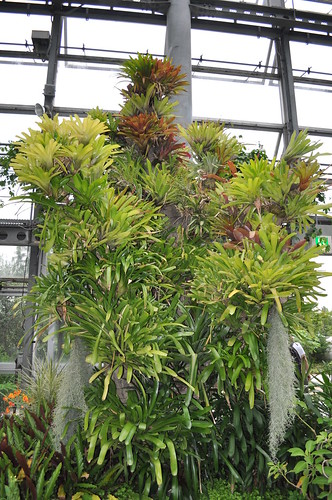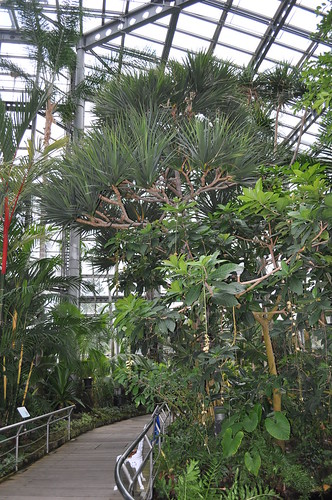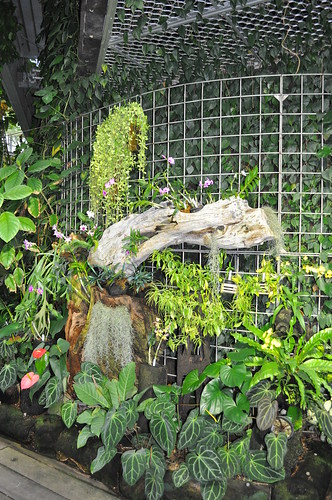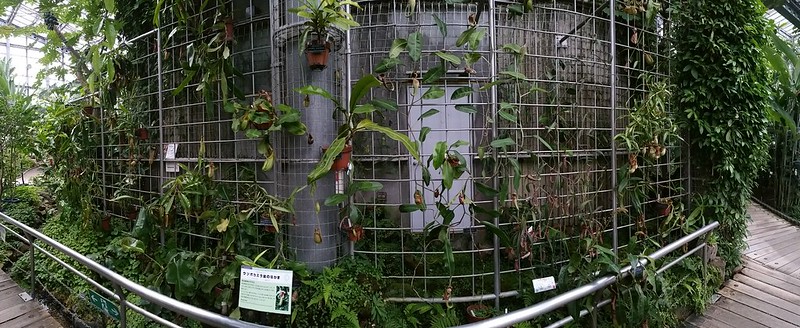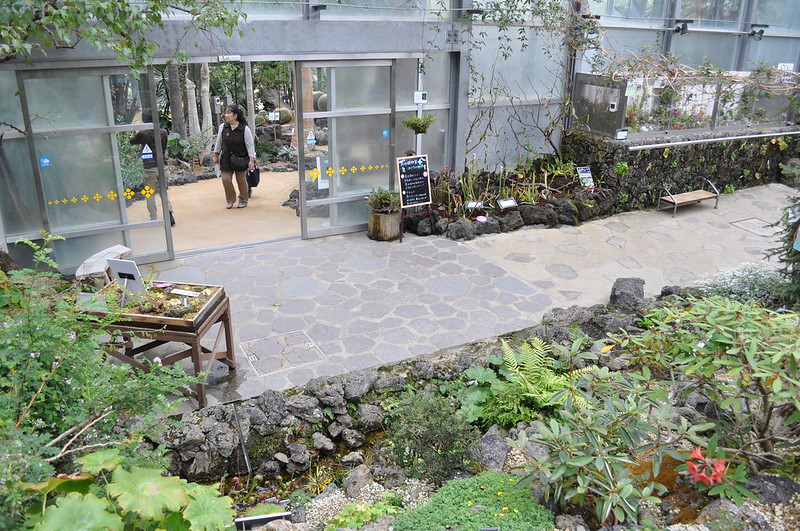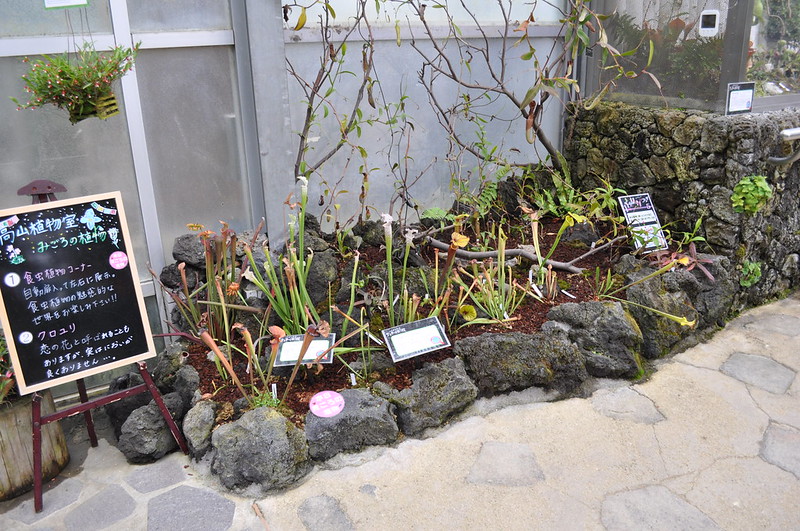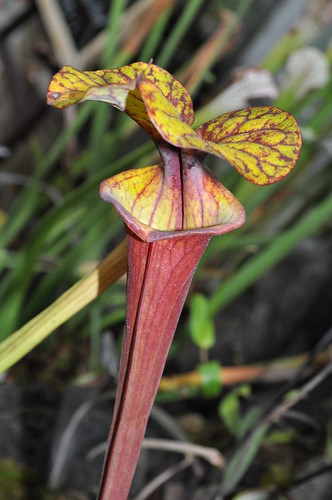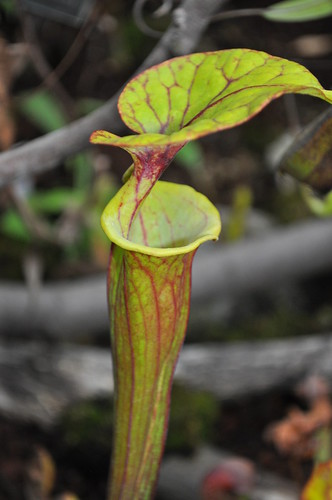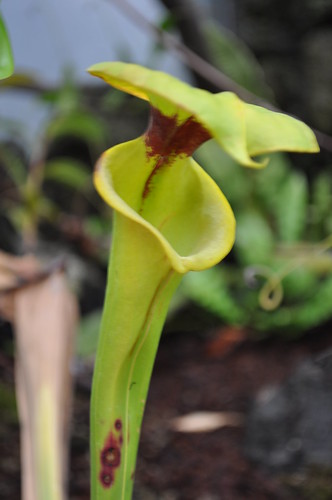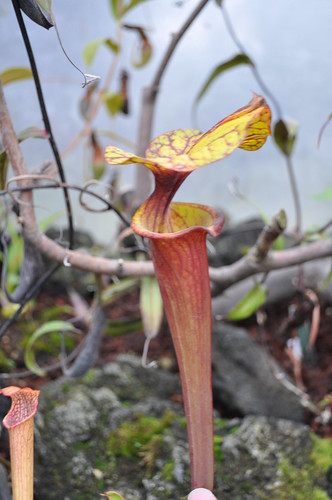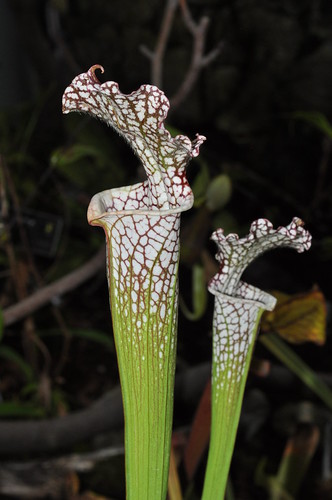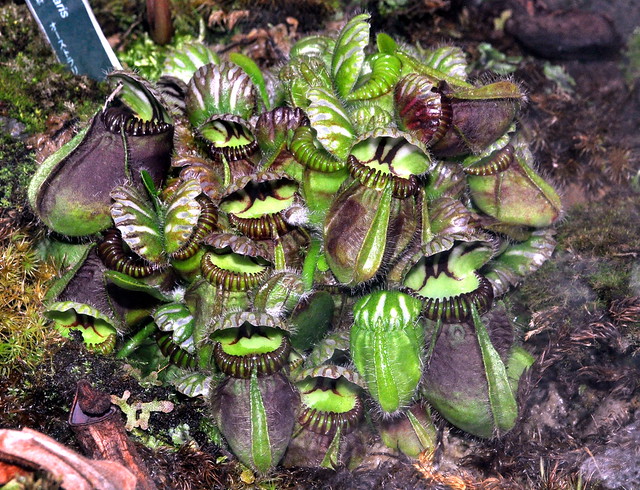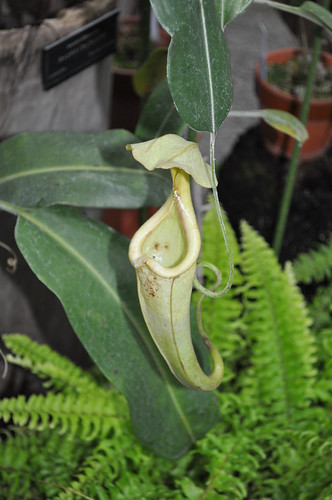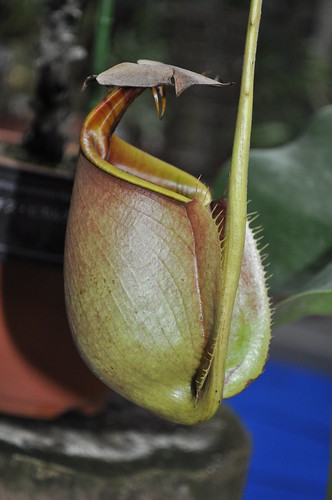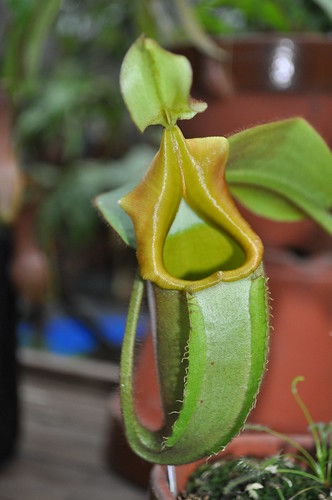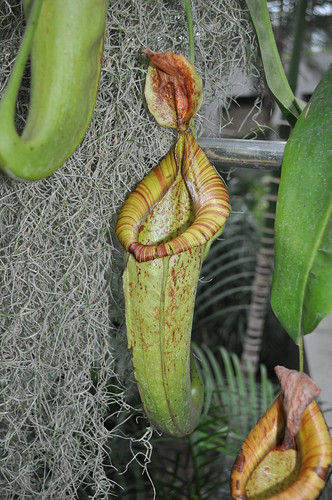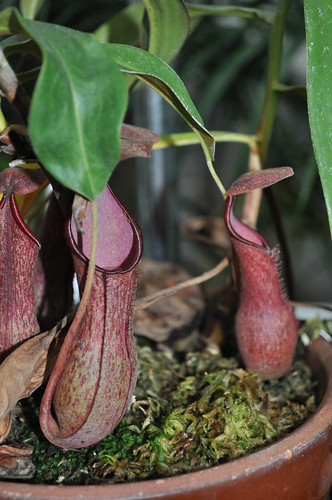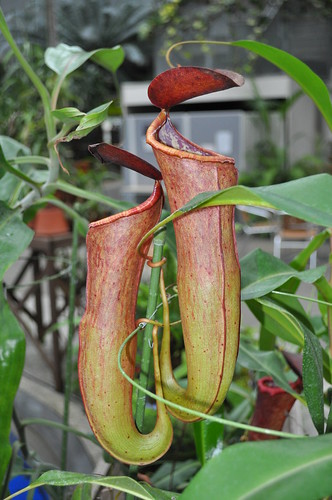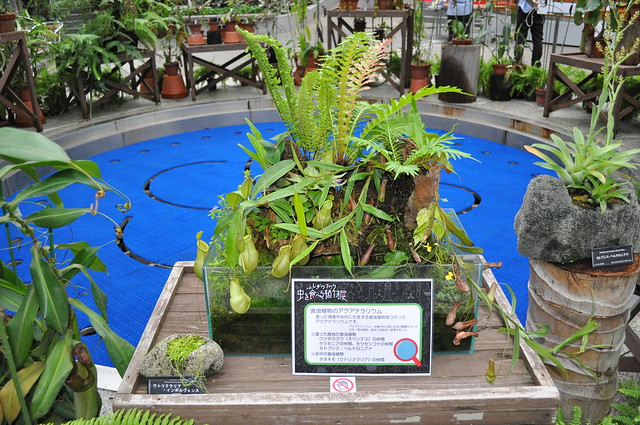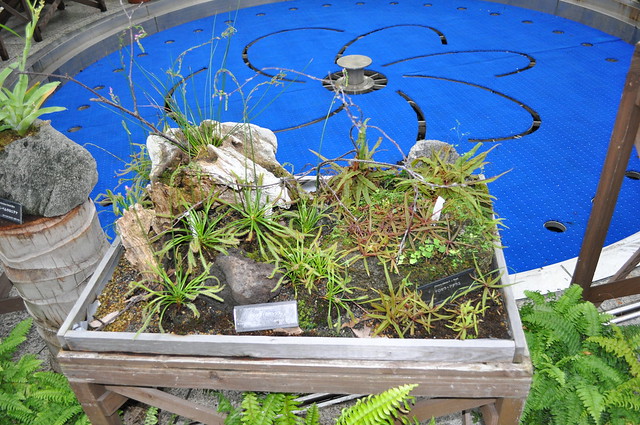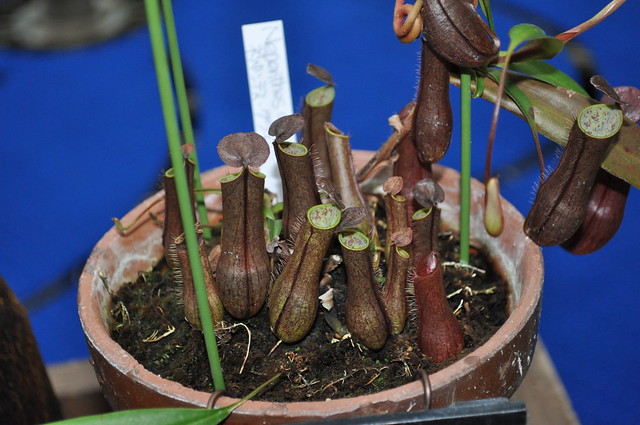The above picture may almost pass for being taken in the wilds of tropical north Queensland (see part 2 for an ill fated attempt at finding Drosera schizandra!), but it was not. It was taken in Japan, where we spent two weeks travelling through Osaka, Nara, Kyoto, Kanazawa and Tokyo on holiday.
At our first port of call, Osaka, it did not take long for carnivorous plants to literally jump out of the woodwork. Within two hours of us arriving, my wife noticed this poster at an Osaka subway station:
Yep – a Carnivorous Plant exhibition! After a little digging, it turned out the exhibition was at the Sakuya Konohana Kan botanic gardens, which was a short walk from the Tsurumi Ryokuchi subway station. So after visiting the Osaka castle, I headed over for a visit.
The Sakuya Konohana Kan botanic gardens (let’s abbreviate that to SKK) is absolutely world class! It is a massive greenhouse complex with plants from tropics, subtropics, temperate and even Antarctic regions. Here are a few photos to give you an idea of the scale of the greenhouses from the inside:
Numerous orchids were on display, including these magnificent multifloral Paphiopedilum slipper orchids:
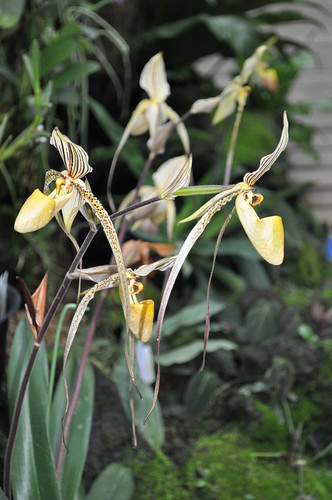
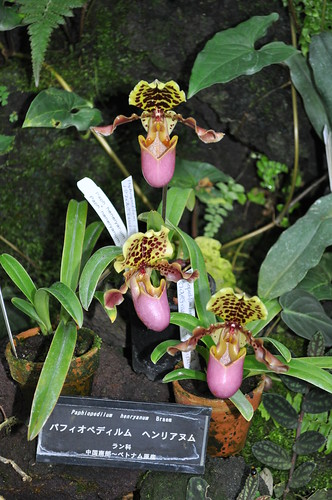
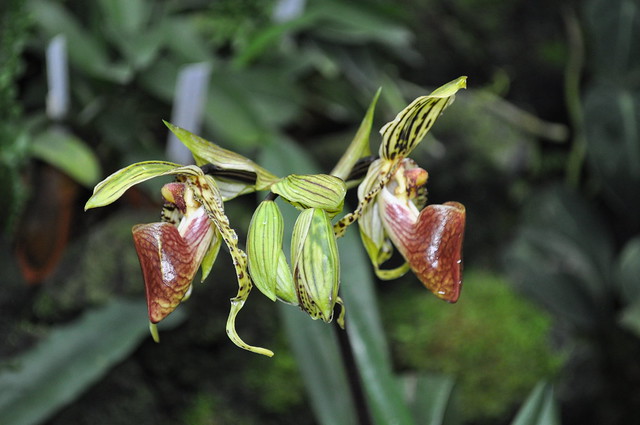
They even have two preserved Rafflesia arnoldi flowers, including one cut open to see the inside! Here is the flower preserved intact:

In addition, the Tokyo natural history museum had a life size model of R arnoldi that was modelled with the precision and care that are synonymous with Japanese workmanship. Being a plant otaku, I of course had to get the Rafflesia figurine from the museum gift shop!
Their stock standard carnivorous plant display is better than the exhibitions many botanic gardens run, and their use of carnivores in displays is very prominent. Above is a panorama view of their Nepenthes display, with closeups of some specimens below:

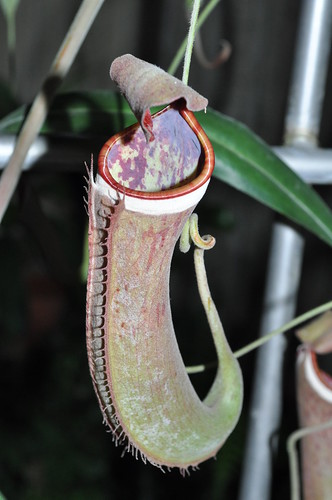
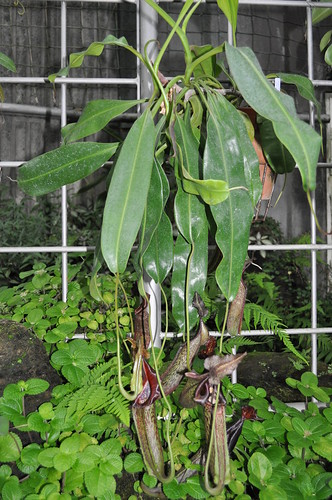
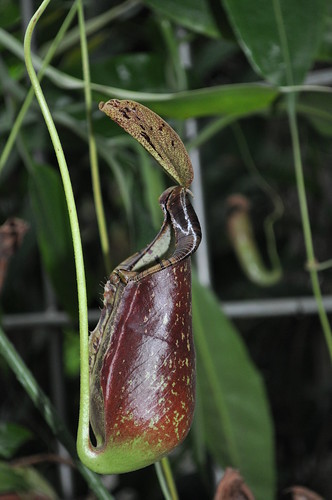
Beneath these Nepenthes was alongside a beautifully rendered rocky stream that the Drosera adelae were growing profusely alongside a beautiful creek that roughly evoked a north Queensland rainforest stream.
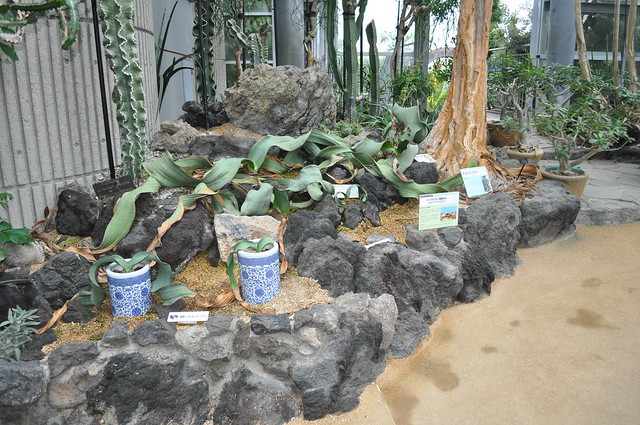
Their succulent house had massive Welwitschia mirabilis – not carnivorous but a bizarre succulent that can take hundreds of years to grow. To have plants this size on display is quite an achievement and evidence of master horticulturalists at work.
The temperate house had a very nice display of Sarracenia, Darlingtonia, Heliamphora, highland Nepenthes, Cephalotus and Pinguicula. Here are some of the Sarracenia:
Nice! They were being grown in coir peat, surprisingly.
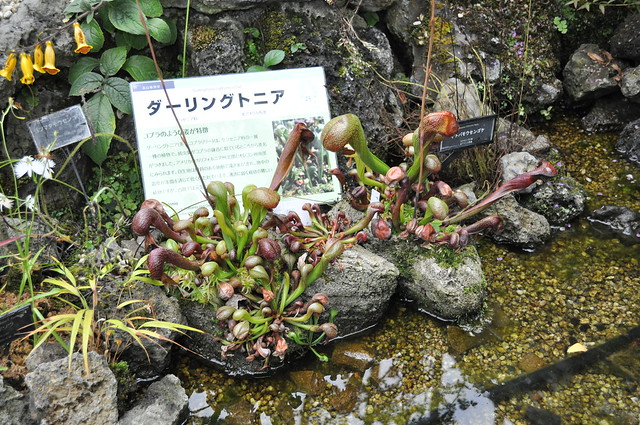
The Darlingtonia were streamside and looked breathtaking.
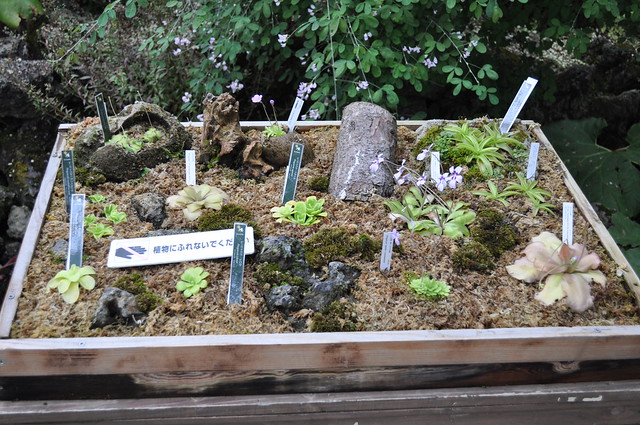

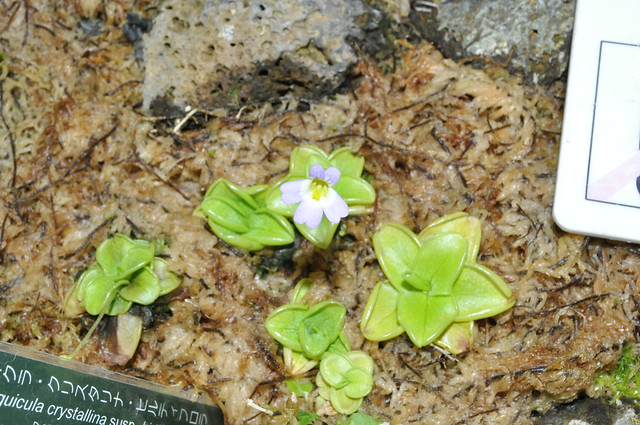
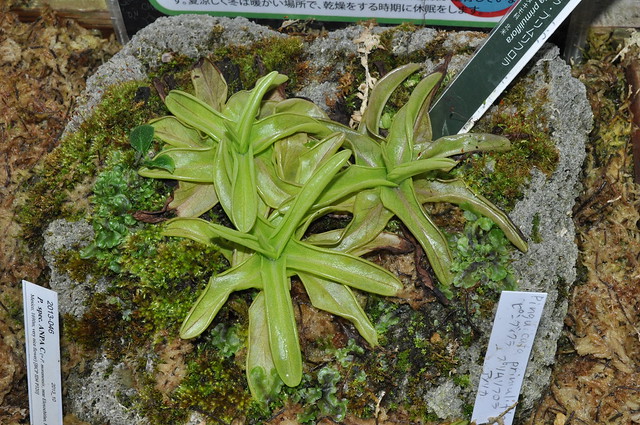
The table of Pinguicula were equally stunning.
And the highland plants were in a climate controlled terrarium. The Cephalotus were being grown to perfection, as were some very large Nepenthes mikei and Heliamphora.
By this stage, I was pretty impressed (at least based on what we get in Australian botanic gardens, which can be woeful in comparison). But what I had seen were just the standard displays. The exhibition itself was in the atrium of the gardens.
It was Nepenthes city! Here are some standouts:
There was also a nice, dark red Sarracenia flava hybrid on display that sadly had no label to tell me what it was.
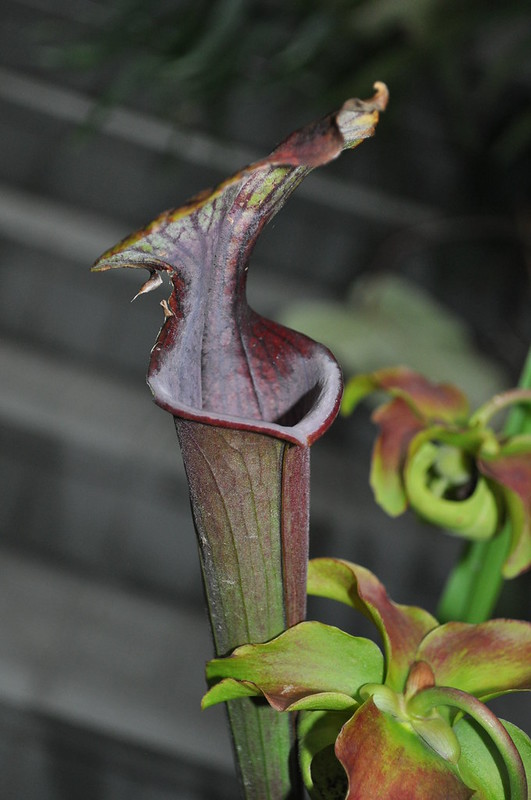
Their models of Nepenthes were done to perfection – Japanese modellers are among the world’s best!
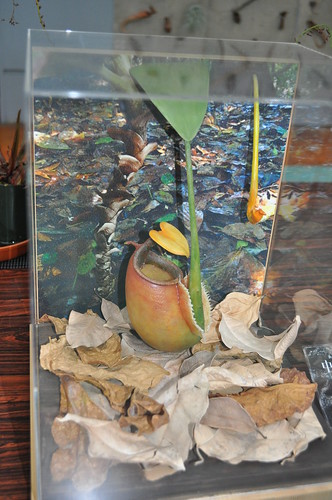
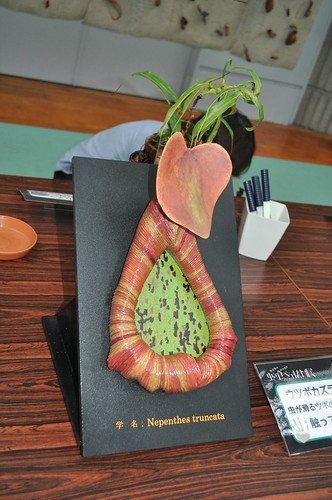
I am very partial to Nepenthes ampullaria (amps), and seeing so many in one spot was wonderful.
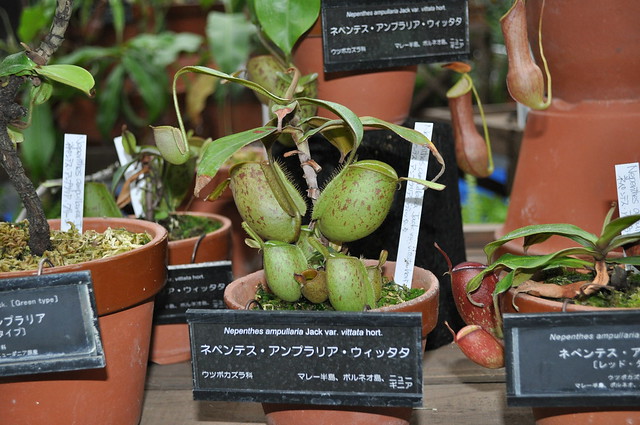
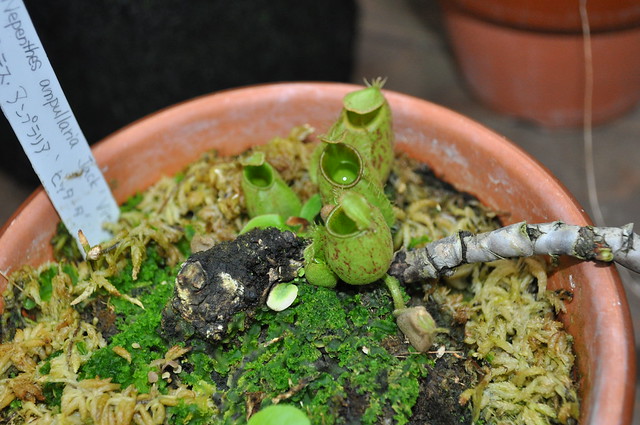
I only realised how many different amp variants were on display when I got back home – I had literally 10 minutes to photograph everything before closing. I made a return trip a bit over a week later (after the exhibition was over so no more amps!) and still ran out of time here!
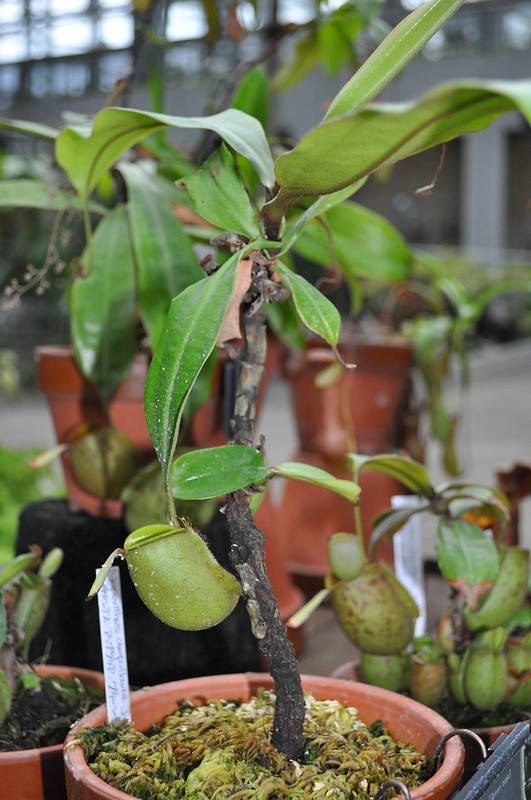
Also in Japan, I even found some VFTs for sale in an impressive looking boutique nursery in Ueno, Tokyo City. They were obviously ex tissue culture and their label is as shown. JPY220 was about AU$2.75 at the time we were there, so quite cheap. Opposite was a magnificent restaurant that did incredible soba noodles.
Directions to the SKK:
If you are visiting Osaka, it is well worth the effort to get out to the SKK for a visit. Allow however much time you can spare for plant viewing plus about an hour return for the subway. I spent maybe three hours here and could have spent a lot more.
Take the Nagahori-Tsurumi Ryokuchi line (lime green on the map) to Tsurumi Ryokuchi. The cost is about Y240 (AUD $3 at the time of my visit) from most subway stations (fare decreases the closer you are to the destination station) and the fare allows you to swap between lines en route.
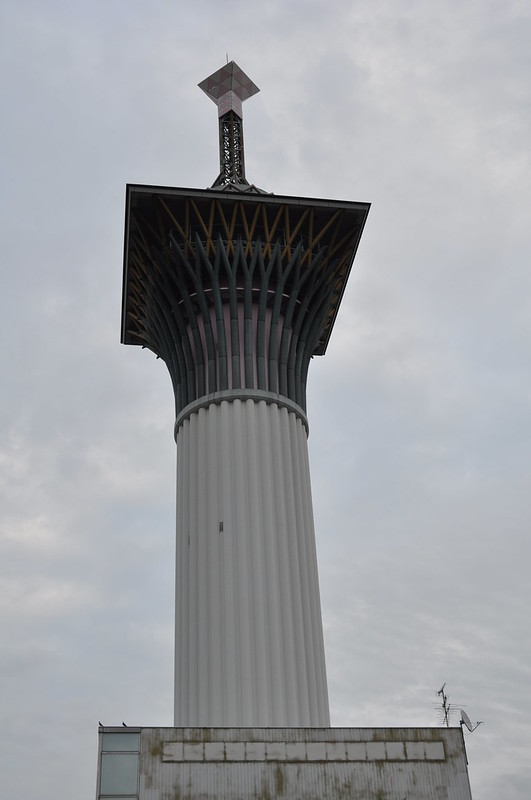
Out of the subway, turn right and go up the stairs, then turn right again, follow the walking path and cross at the lights. By now you should have seen the tower shown above, which is right at the entrance to the SKK. Walk maybe 50 meters or so into the parklands from the pedestrian crossing until you get to a fountain, then turn left, which will take you towards the tower and the SKK. Or just walk towards the tower once you have crossed the pedestrian crossing.
The subway itself is very westerner friendly with announcements in both Japanese and English and is impressive to use in itself – if only the Australian public transport systems were run like those in Japan! The ticket machines are automatic and have an English option, which you select first. Then enter some coins and select your fare. So don’t let the subway stop you from visiting!
Holiday Tales Part 2 tells of a failed attempt at finding Drosera schizandra on Mount Bartle Frere…
